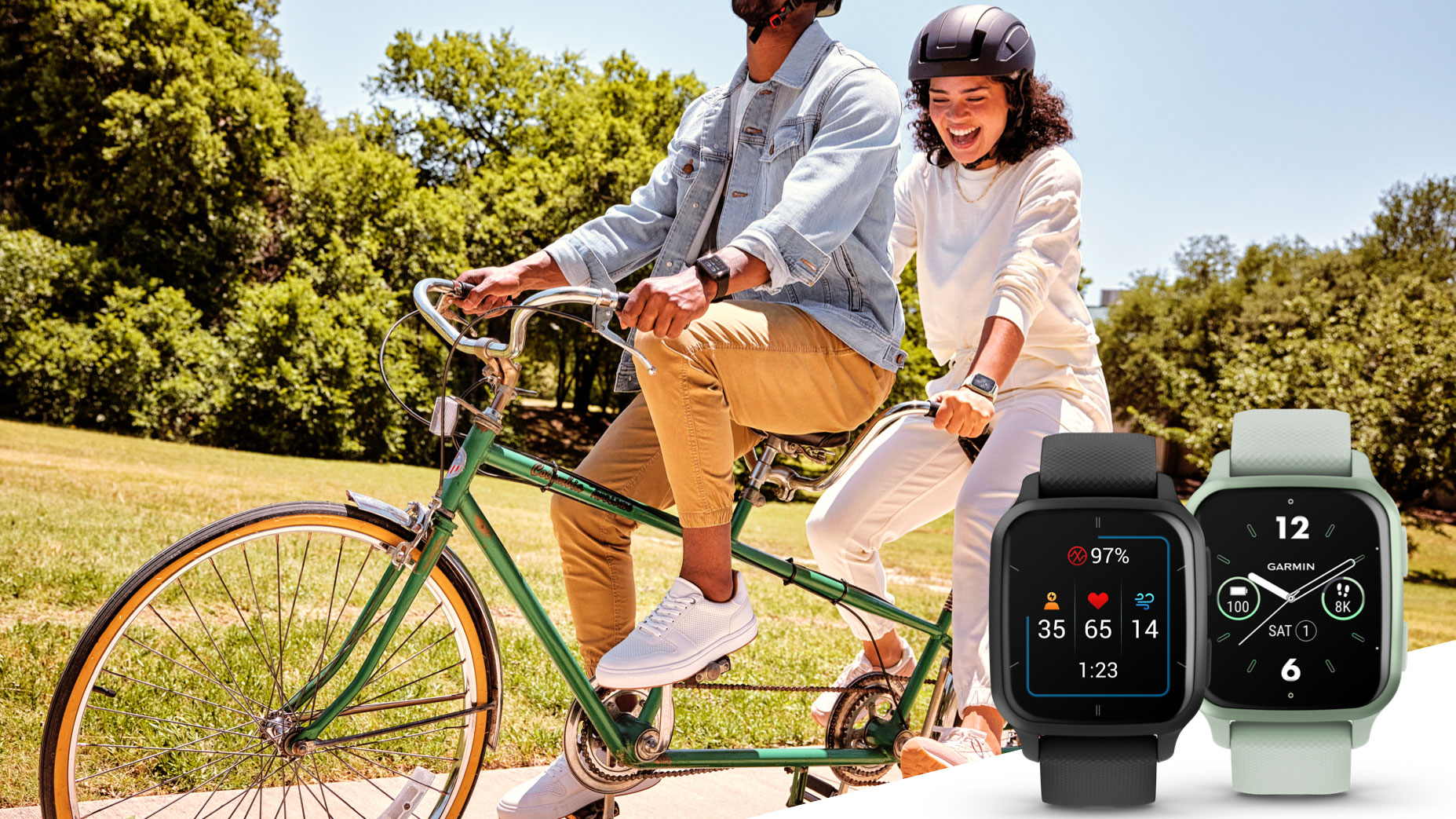Garmin's new watch looks better and cheaper than an Apple Watch SE
The Garmin Venu Sq 2 just landed, and there's lots to like

The Garmin Venu Sq 2 has been revealed at IFA 2022, and it looks great. Although it’s a bit of a refresh of the original Garmin Venu Sq rather than breaking too much new ground, it’s improved on its predecessor in a few small but significant ways.
Battery life, for example, has been beefed up from six to a hefty 11 days, and the AMOLED touchscreen that's complimented by Garmin’s usual five-button system is a touch bigger at 1.4 inches.
New to the Venu Sq range are some of Garmin’s latest fitness-orientated features, such as Health Snapshot, which offers a brief look at your heart rate variability, respiration, blood oxygen levels and stress response in just two minutes. Body Battery scores – a metric designed to tell you how well your body is recovering from your previous workout sessions – have also made the leap.
Menstrual tracking, sleep scores, 24/7 heart rate tracking, access to Garmin Pay for on-wrist transactions, and Garmin’s incredibly useful (and totally free) Garmin Connect app are all here too. The watch costs $249.99 in the US and £229.99 in the UK, while a Music Edition, which can store up to 500 songs, costs $299.99 in the US and £269.99 in the UK. The watch’s Australia prices are TBC.
The Venu Sq 2, like its predecessor, does all the above without looking like a chunky monster of an endurance watch like so many other Garmins – its squarish pebble shape is reminiscent of the Apple Watch or the Fitbit Versa series.
In fact, because it looks more like a lifestyle watch than a sporty number, I was wondering how it compares to the most popular smartwatch in its price bracket, the Apple Watch SE – and it compares extremely favorably if your main consideration is fitness.

The Garmin Venu Sq 2 has around five times the battery life of an Apple Watch SE, which makes it far more efficient when it comes to sleep tracking, as you don't have to take it off nearly as often, which allows it to build up a better picture of your health.
It’s got 24/7 heart rate tracking and lots of sports modes, mindfulness features, and stress tracking, all comparable to the Apple Watch SE, and it's got great GPS, thanks to Garmin’s multi-band ability to call on Galileo and GLONASS satellites.
Sign up for breaking news, reviews, opinion, top tech deals, and more.
It’s slightly cheaper in all markets than Apple’s offering, and it comes with Garmin Connect absolutely free, which offers training plans and recommended workouts that for Apple Watch owners are only accessible via Apple’s paid-for Apple Fitness+ subscription.
When I use a smartwatch, I want to strap it on and forget about it, and have it do the legwork for me, especially when it comes to calculating my sleep or recommending that I hold off on a big run because I’m not sufficiently recovered from yesterday’s gym sesh. I don’t find myself using many third-party apps on a regular basis, and I certainly don’t want to charge my watch every 20 hours.
That’s not to say there aren’t reasons to buy an Apple Watch SE over the cheaper and (on paper, at least) better Garmin Venu Sq 2 – you may already be invested in the Apple ecosystem, with an iPhone and AirPods, or you might love the idea of using some of your favorite third-party apps on-wrist, or being able to calls with the cellular version.
However, if you’re on the fence, I’d give the Garmin Venu Sq. 2 some due consideration from a fitness and financial perspective, at least until the reviews come in. In the meantime, check out how good Garmin Connect is – here are five little-known features the free software offers budding athletes.
IFA 2022 is Europe's biggest tech show, and TechRadar is in Berlin to bring you all the breaking news and announcements, plus our hands-on first impressions of the new TVs, wearables, audio devices and other gadgets on show.

Matt is TechRadar's expert on all things fitness, wellness and wearable tech.
A former staffer at Men's Health, he holds a Master's Degree in journalism from Cardiff and has written for brands like Runner's World, Women's Health, Men's Fitness, LiveScience and Fit&Well on everything fitness tech, exercise, nutrition and mental wellbeing.
Matt's a keen runner, ex-kickboxer, not averse to the odd yoga flow, and insists everyone should stretch every morning. When he’s not training or writing about health and fitness, he can be found reading doorstop-thick fantasy books with lots of fictional maps in them.